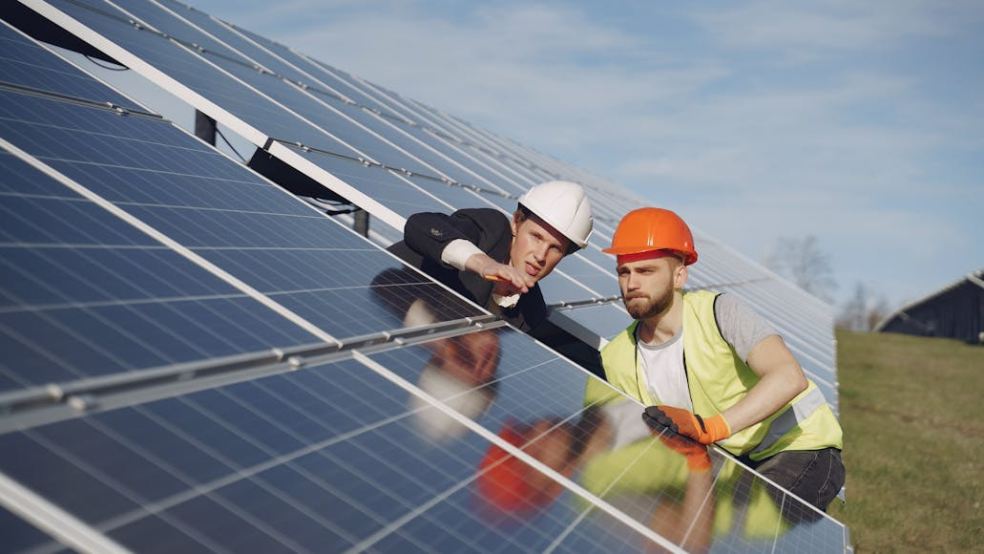
Why DAS Solar N-Type Bifacial Panels Are Gaining Ground in the UK Solar Market
As the UK continues its shift toward renewable energy, solar technology is evolving to meet rising demand for efficiency and sustainability. Among the innovations leading the way are DAS Solar’s N-Type bifacial panels, an advanced solution that's starting to gain serious attention in the UK solar market.
With their high performance, longevity, and the ability to harness power from both sides of the panel, these bifacial modules are redefining what’s possible in solar generation. DAS solar panels, particularly the N-Type bifacial range, are becoming a smart investment for residential and commercial energy systems across the UK due to their efficiency and reliability.
What Sets N-Type Bifacial Panels Apart?
Traditional monofacial solar panels only absorb sunlight on one side, but bifacial panels are designed to capture sunlight from both the front and the rear. This means they can generate more electricity, especially in settings with reflective surfaces like snow, concrete, or white roofing materials.
DAS Solar’s N-Type bifacial panels use N-Type monocrystalline silicon cells, which offer several key advantages over older P-Type cells. These include:
-
Higher efficiency rates
-
Lower degradation over time
-
Improved performance in low-light and high-temperature conditions
For a country like the UK, where weather conditions can be unpredictable and sunlight hours vary, having panels that work efficiently in overcast or cooler environments is a major plus.
Boosting Output with Reflective Surfaces
One of the biggest selling points of DAS Solar’s bifacial panels is their ability to increase energy yield by capturing reflected sunlight from surfaces below or around the installation. This makes them especially beneficial for ground-mounted arrays, commercial rooftops, and carport structures.
In urban UK settings, many installations are being deployed over light-coloured or gravel-covered rooftops that help reflect light onto the rear side of the panel. This reflective boost can raise energy production by up to 10–30%, depending on the environment.
Durability and Long-Term Value
N-Type panels are known for their longevity. DAS Solar’s technology is designed with lower rates of Light Induced Degradation (LID) and Potential Induced Degradation (PID), which means they maintain their performance more consistently over the years.
For UK homeowners or businesses looking to invest in solar, this translates to stronger long-term returns and less concern over declining system performance. Many DAS Solar panels also come with extended warranties—often up to 30 years—which enhances peace of mind for those looking at the long game.
A Sustainable Fit for the UK’s Energy Goals
The UK government has committed to net-zero carbon emissions by 2050, and solar energy is expected to play a vital role in achieving this target. Innovative solar technology like DAS Solar’s N-Type bifacial panels aligns perfectly with this vision by maximising energy production while minimising land use and system costs.
Because bifacial panels generate more electricity from the same footprint, fewer panels may be required to meet the same energy demands. This makes installations more space-efficient and less visually intrusive—an appealing feature for rural, residential, or conservation-sensitive areas.

Compatibility with Modern Inverters and Systems
DAS Solar’s bifacial modules are compatible with most modern inverter systems used in UK solar installations. Whether you’re upgrading an existing system or building from scratch, these panels integrate smoothly with common monitoring and optimisation tools.
Installers and energy consultants across the UK are increasingly recommending bifacial N-Type solutions for new builds and large-scale solar farms. As more data on their real-world performance accumulates, confidence in their capabilities continues to grow.
Growing Popularity Across Europe
Beyond the UK, DAS Solar’s N-Type bifacial panels are gaining traction across the European market. Countries like Germany, the Netherlands, and France are adopting bifacial technology for both public and private projects, further proving their reliability and value.
This continental popularity also drives economies of scale, helping bring down costs and making high-efficiency bifacial systems more accessible to UK customers.
Conclusion
DAS Solar N-Type bifacial panels represent a significant leap forward in solar energy technology. With better efficiency, long-term performance, and the ability to capture more sunlight in diverse conditions, these panels offer a compelling case for UK homeowners and businesses looking to maximise their investment in solar.
As the country moves steadily toward its clean energy future, technologies like DAS Solar’s bifacial systems will play a vital role in reshaping the way we power our homes and communities. For anyone considering solar installation in the UK, exploring the benefits of N-Type bifacial panels is a smart move toward energy independence and environmental responsibility.











